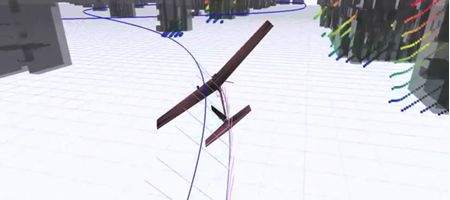MIT researchers have created an autonomous plane that can fly indoors – without the use of GPS.

They’ve completed a series of flight tests in which an autonomous robotic plane running a specialized state-estimation algorithm successfully threaded its way among pillars in the parking garage under MIT’s Stata Center.
“The reason that we switched from the helicopter to the fixed-wing vehicle is that the fixed-wing vehicle is a more complicated and interesting problem, but also that it has a much longer flight time,” says MIT’s Nick Roy.
“The helicopter is working very hard just to keep itself in the air, and we wanted to be able to fly longer distances for longer periods of time.”
But this is a much harder task, as a plane is much faster than a helicopter, and can’t carry out motions such as going sideways or hovering.
The team designed its own plane, which has unusually short and broad wings, allowing it to fly at relatively low speeds and make tight turns, while still having the cargo capacity to carry the electronics that run the researchers’ algorithms.
To start with, the plane’s being given an accurate digital map of its environment. But it still has to determine where it is on the map in real time, using data from a laser rangefinder, accelerometers and gyroscopes. It also has to deduce its orientation – how much it’s tilted in any direction – its velocity, and its acceleration. Because many of those properties are multidimensional, to determine its state at any moment, the plane has to calculate 15 different values.
This is managed by combining two different types of state-estimation algorithms. One, called a particle filter, is very accurate but time consuming; the other, called a Kalman filter, is accurate only under certain limiting assumptions, but is very efficient.
The next step will be to develop algorithms that can build a map of the plane’s environment on the fly. Adding visual information to the rangefinder’s measurements and the inertial data will help, says the team.






